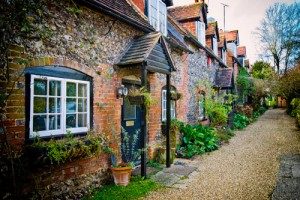
Buying a home – new versus old
Buying a house is not only about price

Price
Older properties, such as Victorian terraced houses, generally offer more space for the purchase price than new-build homes. Generally those who love them list plenty of storage space as one of the main advantages and that they have stood the test of time.
However, mortgage companies will usually want to see evidence that an older house has been properly damp and rot proofed and that there are certificates of guarantee to prove it. If not, regardless of whether there is any evidence of damp or rot they may make it a condition of the mortgage that the work is done and perhaps withhold a part of the mortgage until it has been.
New homes will not raise such questions, but that doesn’t mean they are a always a better buy. The selling price may be a little higher, rooms are generally smaller and because they are new and generally have been constructed more quickly, there is no telling what problems may arise later. It is generally better to buy a new home that is registered with National House-Building Council (NHBC), which comes with a 10-year warranty and protection scheme. Plenty of people really do benefit from this scheme as over time new homes need a bit of time to settle.
Buyers who are using the Help to Buy equity scheme with only a 5% deposit will be restricted to new-build only.
However, while the new home is likely to retain its value you may have to wait for more than a couple of years before it appreciates enough to sell.
Maintenance, fixtures and fittings
It is a mistake to imagine that the older property will always cost more in maintenance than a new-build.
The standard new-build may not have the fixtures and fittings at the same level of luxury as shown in an estate’s show home. Fitting everything from kitchen appliances to curtain rails, not to mention carpets, can add significantly to the cost of a new home.
The other consideration is the defects that may show up as the house ages. Plaster can start to crack as it dries out, for example.
The older house is likely to come with carpet, curtain rails and the like already in place, and while you may not particularly like the previous owner’s choice of carpet colour or pattern, you can at least budget to replace it at a time that suits your purse.
Running costs
While in theory there is no contest in that new-build homes should be more energy efficient and therefore cheaper to heat, you may not have any choice about the kind of heating you can have. They also have lower ceilings than older properties.
However, an older house can be more versatile, in that it may have individual fireplaces with electric or coal-effect gas fires in some rooms as well as central heating allowing more flexibility about which rooms to heat depending on circumstances and the time of day.
While ultimately the type of house you choose will be as much about where you feel comfortable as it will be about what you can afford it is always important to do as much research as you possibly can before making a decision.





